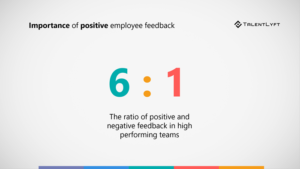
Golden tips to provide quality feedback to your employees
Feedback to your employees is motivational to the employees. Analytical Feedback to your employees can be productive in the long run for good teamwork.

Feedback is something that can either make or break the performance of an employee. Almost every employee wants employee feedback, an honest assessment of their behaviour to help them improve their work. If an employee listens and takes action on, clear and constructive feedback, their overall performance will improve. It will not only result in Successful employee retention and promotion but also result in overall employee job satisfaction.
Not providing feedback can be detrimental. It can lead the employees two times more likely to be disengaged as they feel like their manager is ignoring them. So, it is crucial to ensure you communicate properly to your employees. Also, use this opportunity to cater to the development of your people.
- You should ensure that this feedback offers impact and makes a difference in your employees.
- How can you be sure to provide adequate feedback such as this?
The following tips will aid in this, so you can get started on developing your employees, and their performance, today!

How to feedback to your employees that get results

Be positive: Concentrate on what the person is doing to improve himself when you give feedback.
Focus on his behaviour, not the person: When you discuss a performance issue with any of your employees, keep your emotions in check. Focus on his actions, not the person.
Be specific: Provide solid examples of the behaviour in question. Do not ask vague, “drive-by” criticism like, “You have been arguing with clients a lot” or “I have heard several complaints about your attitude.”
Be timely: Don’t wait until the annual performance appraisal of the employee to provide positive or negative feedback. The closer feedback tie to the behaviour in question, the more powerful it will be.
Make sure you are very clear on why you are delivering the feedback: Feedback often arises from judgment, and we never want to pass it off as feedback. So, it’s critical to pause a moment and think about where the feedback is coming from and how can you deliver it to the employees in a way that he will receive positively.
Don’t consider judgment as a means for feedback: Never use feedback as a shield to share an actual criticism or be judgmental of another person. Judgment isn’t neutral. It is just your opinion on the character of a person.
Provide your feedback from a neutral place: Feedback is a piece of information or your observation, which you are sharing with your employee. Once a person gets the feedback from a neutral space, he can decide whether he should change or not.
Make it a two-way conversation: Take your time to engage your employee or team and check for understanding. Focus on “partnership,” not “this is what you’re doing wrong” or “this is what you need to change.”
Follow up: If your feedback concerns a problem, look for opportunities to “catch them doing it right.” Reinforce positive behaviour.
Make sure you have these qualities before delivering feedback: You can receive a Feedback in the best way when you establish authority, credibility and trust in a relationship. Without these things, it makes it more difficult to receive feedback.
Effective employee feedback is not one-size-fits-all. But, you can do a lot of things to make it a pleasant experience for everyone. Even the smallest gestures from you can make the biggest difference and help someone on their path to becoming a great worker.





